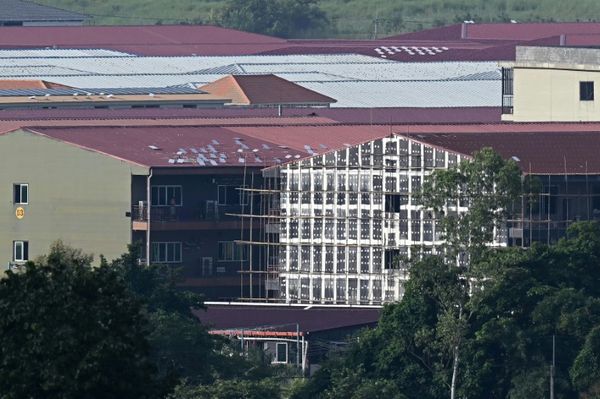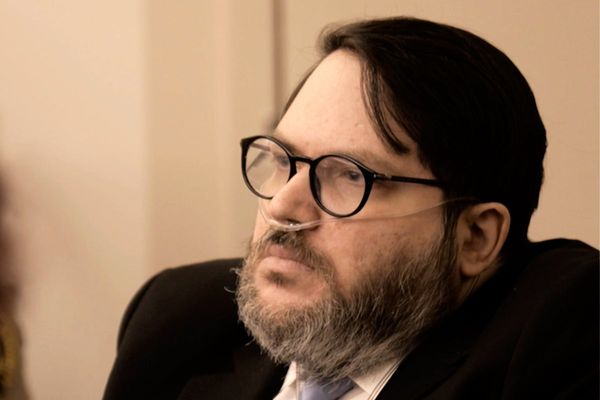
As executive director of the Eurasian Harm Reduction Association, Ganna Dovbakh was among the many public health officials and NGO leaders shocked by the UN secretary-general’s proposal to “sunset UNAids by the end of 2026”.
In the eastern European and central Asian (EECA) countries where Dovbakh works, research indicates that the epidemic is on the rise. Over the past decade, there has been a 48% increase in new infections, and a 32% rise in Aids-related deaths, predominantly among marginalised and criminalised populations such as sex workers, men who have sex with men, and people who inject drugs.
UNAids, says Dovbakh, has always played the role of the region’s diplomat, able to converse with ministers in countries where freedom of speech is limited, advocate for the rights of vulnerable people, and coordinate the sourcing of life-saving antiretroviral drugs from foreign donors. In Tajikistan, for example, where the national HIV response is transitioning from being supported by international funding to being covered by the domestic health budget, she describes UNAids as critical to ensuring that HIV is not forgotten.
“With the sunset of UNAids, there is a big risk that the country will ignore the needs of people living with HIV and affected populations,” she says.
Such possible consequences mean the suggestion that UNAids might close four years earlier than expected has elicited widespread alarm across the UNAids board, especially as it comes at a time when foreign aid for low-income countries is disappearing, throwing the global HIV response into disarray.
At the World Health Summit in Berlin last week, UNAids executive director Winnie Byanyima told an audience of health ministers: “That rapid decline [in funding] is costing lives, let’s be clear about that.”
Angeli Achrekar, deputy executive director of the programme branch of UNAids, described the UN80 proposal – an initiative to transform how the UN works on its 80th birthday – as “a big shock”. It comes as the organisation is already undergoing significant restructuring to slash costs, halving the agency’s 600 staff to 300. She said UNAids has played a critical role this year in helping governments and civil society across the global south respond to the sudden removal of foreign aid, working to ensure that services continued, and monitoring the numbers of people being affected.
“Abruptly sunsetting UNAids is a nail in the coffin of the HIV response,” says Achrekar. “With funding cuts from the US and other major donors, the Aids response could spiral again.”
Researchers describe UNAids’ ability to collate high quality population-level data as being particularly useful in understanding the evolving nature of the epidemic, and something that would be hard to replace. Through UNAids, it’s clear that the African continent remains HIV’s centre with 67% of the 40.8 million people living with HIV. On a more granular basis, the organisation’s data has helped reveal that while the risk of getting HIV has fallen by 60% in sub-Saharan Africa since reaching a peak in 1995, rates of new infections remain persistently high among adolescent girls and young women.
“Many governments and scientists across Africa use the UNAids data to understand where more efforts need to be put in place,” says Kenneth Ngure, president-elect of the International Aids Society and an associate professor at the Jomo Kenyatta University of Agriculture and Technology in Nairobi. “UNAids holds the mirror to the epidemic for everyone to see and act.”
Without UNAids’ data and the comparisons generated between countries and regions, Nomathemba Chandiwana, a physician-scientist at the Desmond Tutu Health Foundation in South Africa, is concerned that it will become harder to push certain public health goals, such as elimination programmes for mother-to-child HIV. She also fears that getting rid of the agency will lead to governments increasingly grouping HIV alongside other competing priorities, which will have a detrimental effect on the ability to prevent new infections.
“In the Western Cape, for example, we don’t have a dedicated HIV prevention unit like other provinces,” she says. “And because of that, HIV prevention is not as good in the Western Cape. You can’t focus on HIV in particular if it’s just part of a wider bucket.”
In central Asia, Dovbakh fears that closing UNAids would make it almost impossible to continue tracking HIV in criminalised populations such as gay men and injectable drug users. She points out that this is deeply sensitive work which has been possible over the past two decades only through the agency’s trust-building and outreach networks. Without them, she suspects that some EECA countries will become more akin to Russia, where there is a concentrated HIV epidemic among marginalised communities, yet government officials say HIV is solely a youth problem that can be addressed through health camps.
“The HIV epidemic will go under the surface,” says Dovbakh. “Some countries could completely cut their HIV response within one to two years, we won’t know what is happening, and then in five years’ time, we will start to see wider breakouts [among the general public] with HIV cases being detected in children, women and medical facilities.”
According to Mitchell Warren, executive director of the Aids Vaccine Advocacy Coalition, the timing of the proposal comes with a cruel irony. In the past two years, numerous scientific advances have been made, including the development of long-acting injectable drugs such as lenacapavir that are capable of blocking viral transmission with near 100% effectiveness.
“We have these amazing opportunities, and we should be focusing more on that than what organisations are going to be around in the next couple of years,” says Warren.
Ngure says that while lenacapavir in particular has been an exciting development, its rollout will be hindered by the absence of data from UNAids pointing to where it is most needed, and pressing pharmaceutical companies to ensure that access to the drug is equitable across all high-risk populations.
“Lenacapavir rollout will need to be guided by the status of the epidemic, with areas most badly affected by HIV being prioritised,” he says. “It will also need global advocacy for funding. Without UNAids, the rollout will be heavily dented.”
For Chandiwana, closing UNAids or absorbing it into other UN agencies could have grave consequences for the future of the global HIV response.
“If you put it all into one big organisation, you’ll find that it actually dilutes what can be done,” she says. “We still have a long way to go with HIV, and at a time when the World Health Organization is also being defunded, if you defund UNAids, you’re doing a lot more harm than good.”







